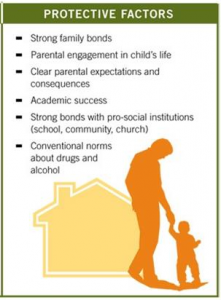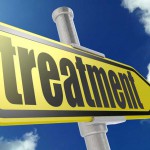Drug Abuse Prevention

Drug abuse is a prevalent problem in the United States. The 1999 National Household Survey on Drug Abuse cited that around 14.8 million people used an illegal drug in the thirty days before survey. So how can we prevent even more people from abusing drugs?
One good first step is to start young. By teaching children and young adults the problems associated with drug abuse can help prevent them from even trying drugs or alcohol. In figuring out how to approach the child or young adult keep in mind the following aspects of any good drug prevention program:
- Discuss the risk factors, especially if there are obvious risk factors already apparent (see the article on risk factors for more information). Help the child change or reduce his or her own risk factors and behavioral traits that could lead them toward future drug abuse.
- Discuss all forms of drug use including tobacco, alcohol, illegal drugs, and the improper use of legal drugs such as prescription medications and over-the-counter medicine.
- Look at your own community and see if there are problem areas for drug abuse and specifically target that when discussing drug abuse.
- Discuss drug abuse in language that the child or young adult understands. Know that as they grow, they will need updates and further information on how to continue to stay away from drugs.
- Invite experts to expound on the problems associated with drug abuse. Let them answer any questions the child or young adult may have.
Depending on your setting, tailor your program as necessary. For example, if you are in a parent-child setting, use your relationship and bonding to enhance the family policies on drug abuse. Monitor your child’s drug information and their outside activities, praising positive behavior. Another setting might be within a school. Discuss how drug abuse affects school situations including dropout rates and relationships with friends.
These programs should teach the skills necessary to reject drugs and alcohol in a myriad of situations. They do not even need to be stopped when the child or young adult grows as drug abuse is a problem with people of all ages. Any drug prevention program should also include:
- parental monitoring,
- school support,
- community involvement,
- the knowledge that even one drug use can lead to drug addiction and further negative consequences,
- and above all, it should promote the fact that drug abuse is completely wrong.
Finally, in discussing drug abuse prevention, make sure to set goals and then check in to make sure the goals are being met. Continue to discuss prevention for drug abuse throughout their life as all ages can be effected by drug abuse.
Drug Abuse Prevention Sources:
- Addiction Intervention Resources, “Adolescent Intervention,” [online].
- National Institute on Drug Abuse, “Prevention Drug Use Among Children and Adolescents,” [pdf online].
- National Mental Health Association, “Alcohol and Drug Abuse, Addiction and Co-Occurring Disorders,” [online].
- U.S. Department of Health and Human Services. Substance Abuse and Mental Health Services Administration, “Understanding Drug Abuse and Addiction,” [online].
- krsd.org (graphic)





